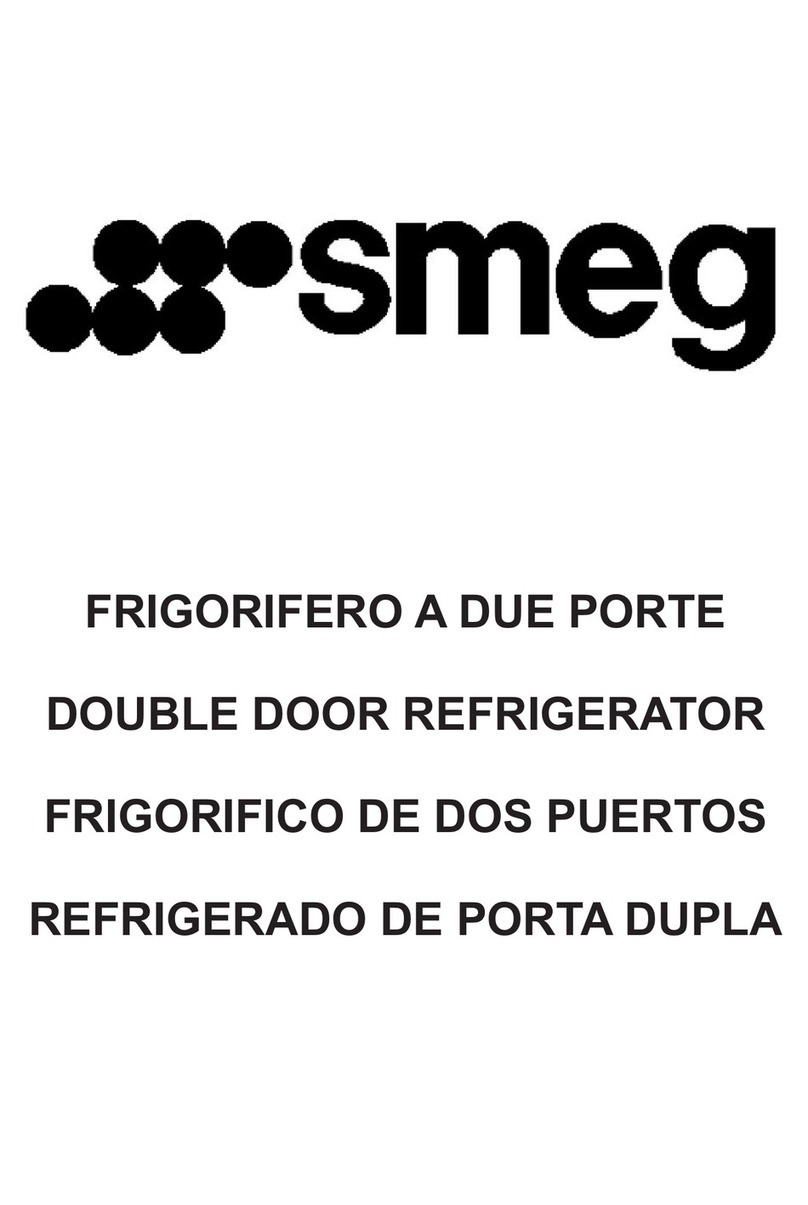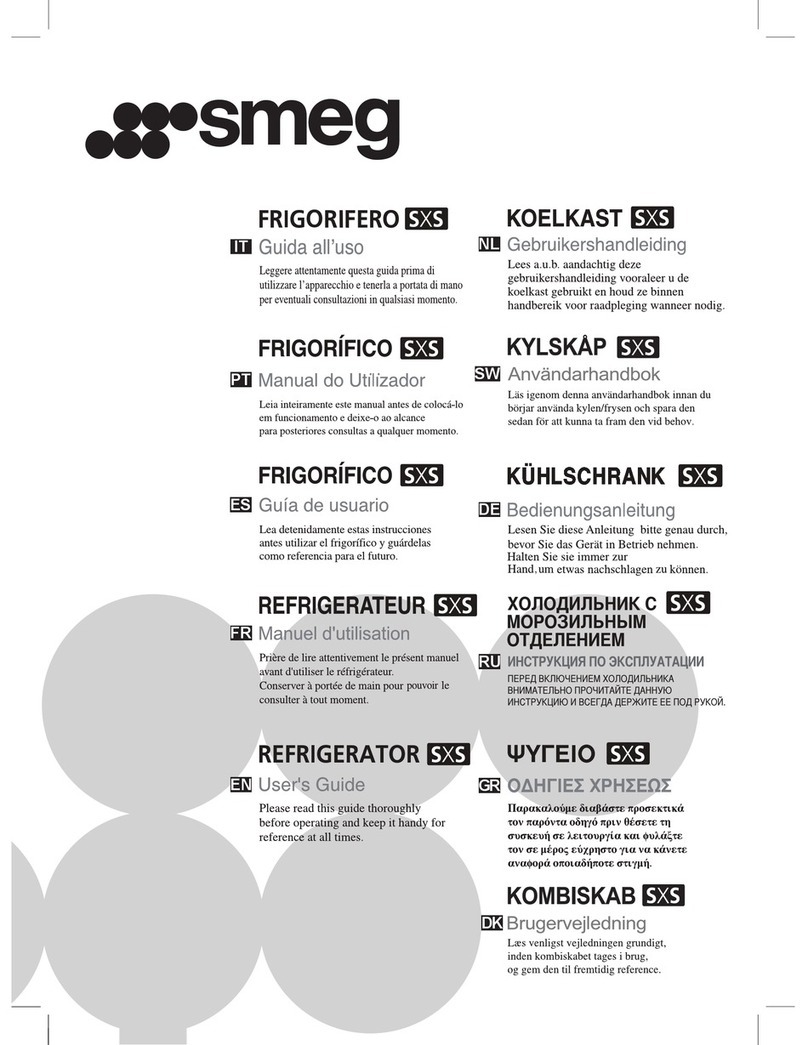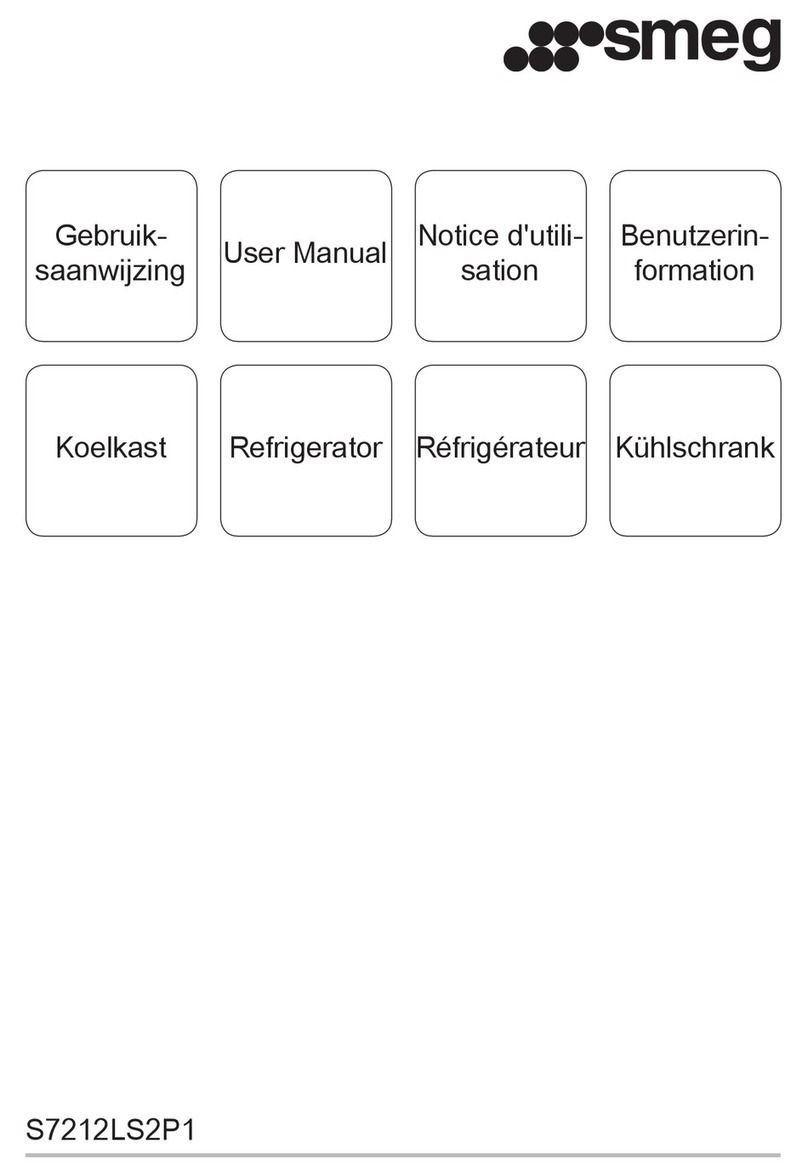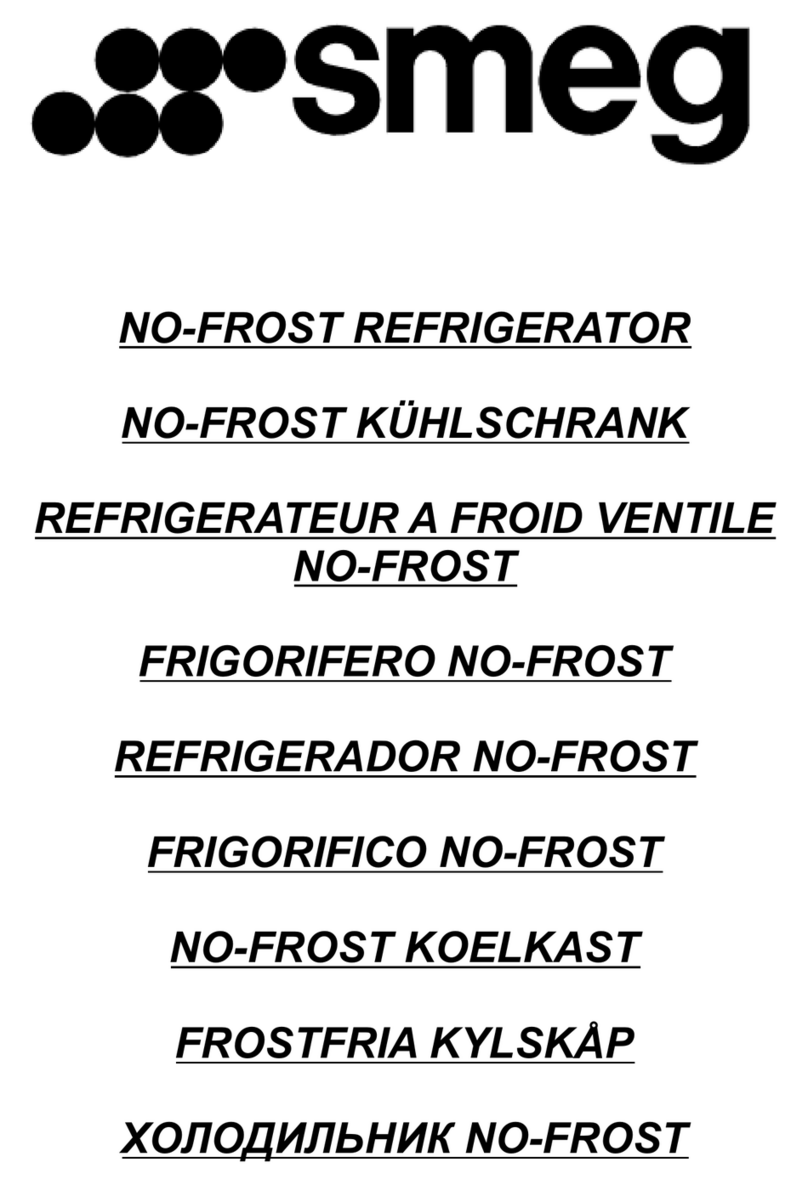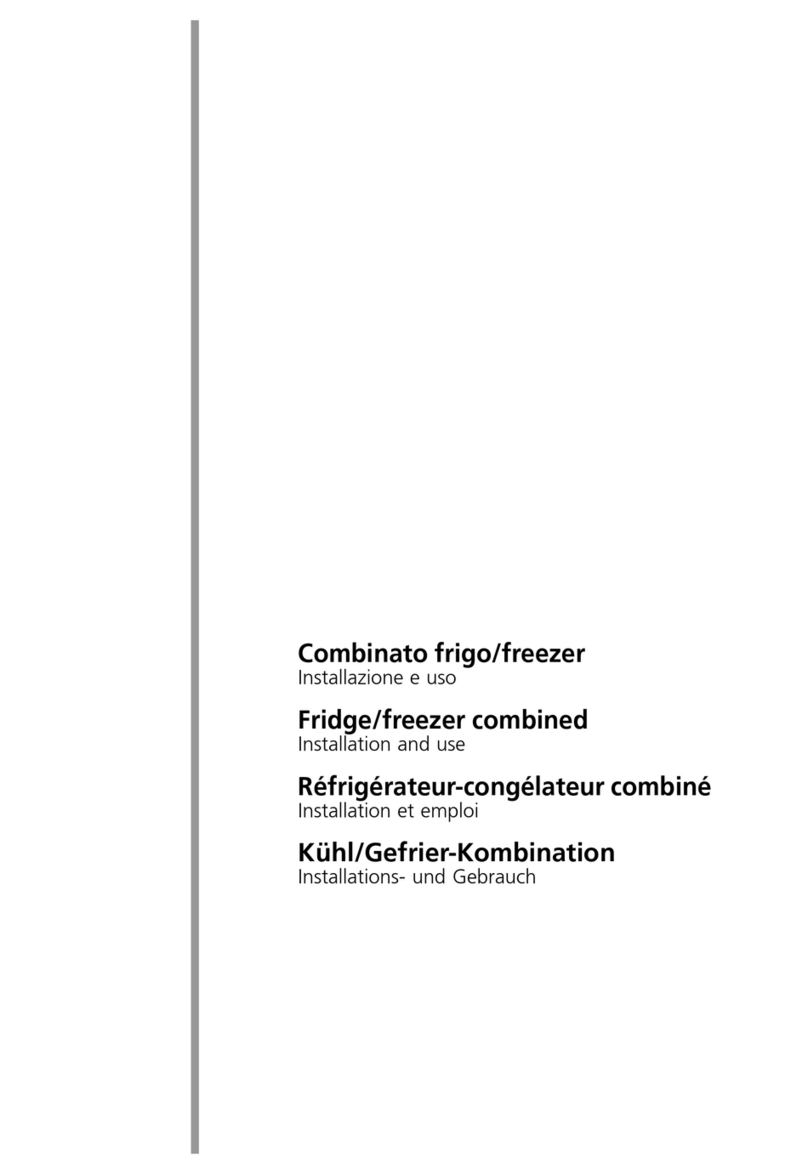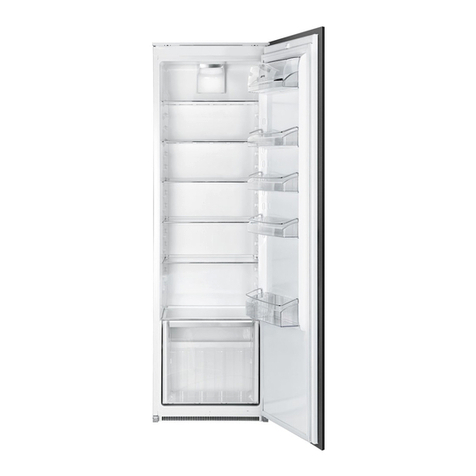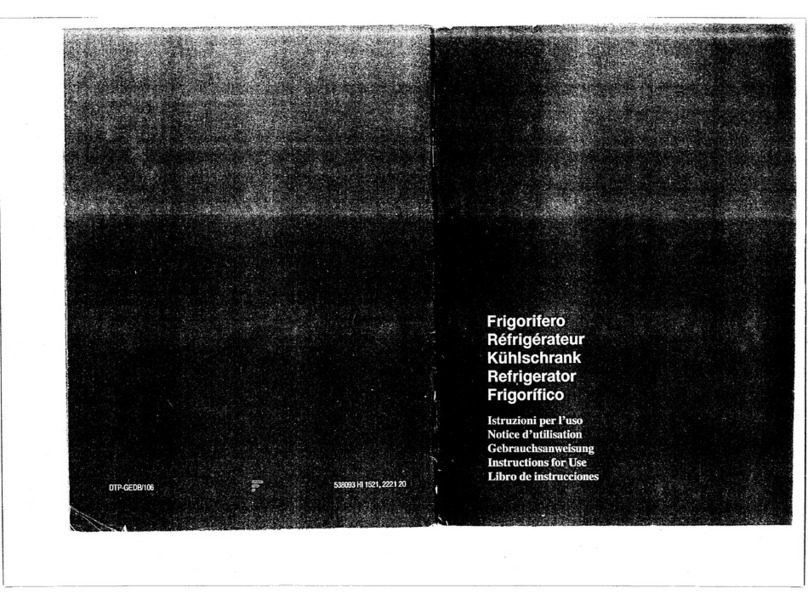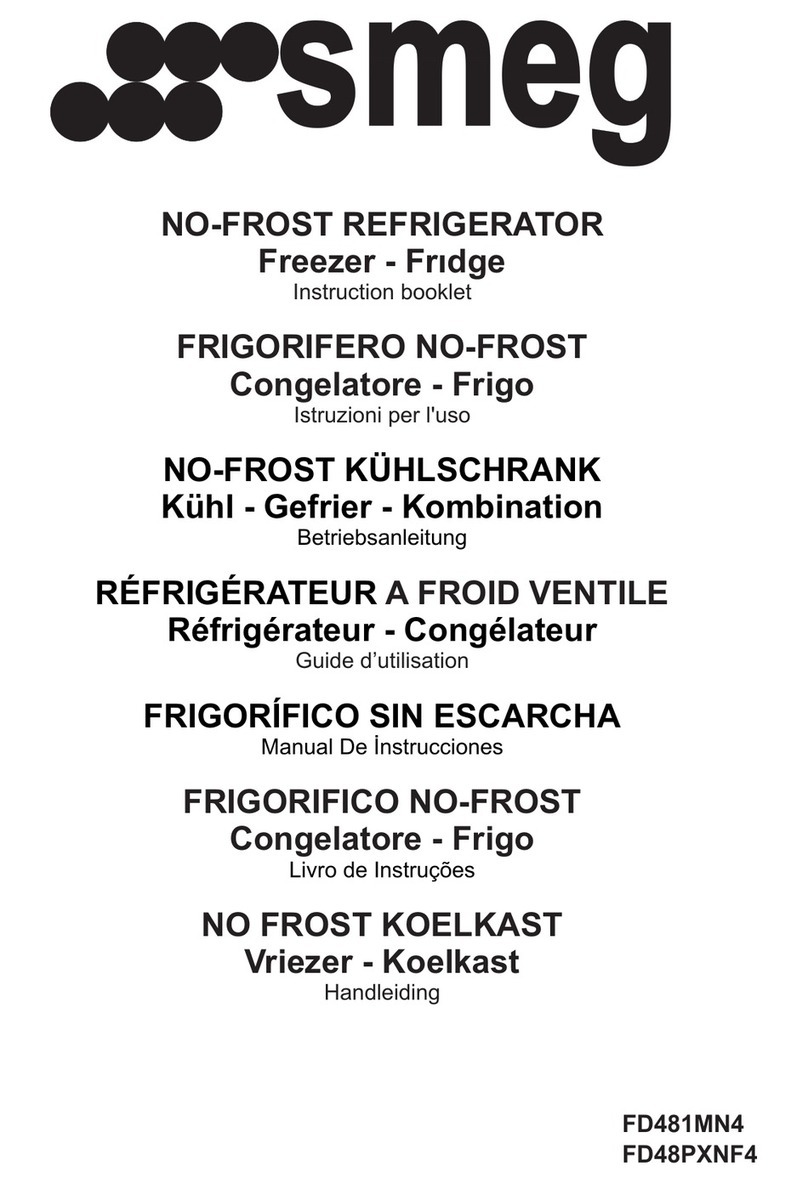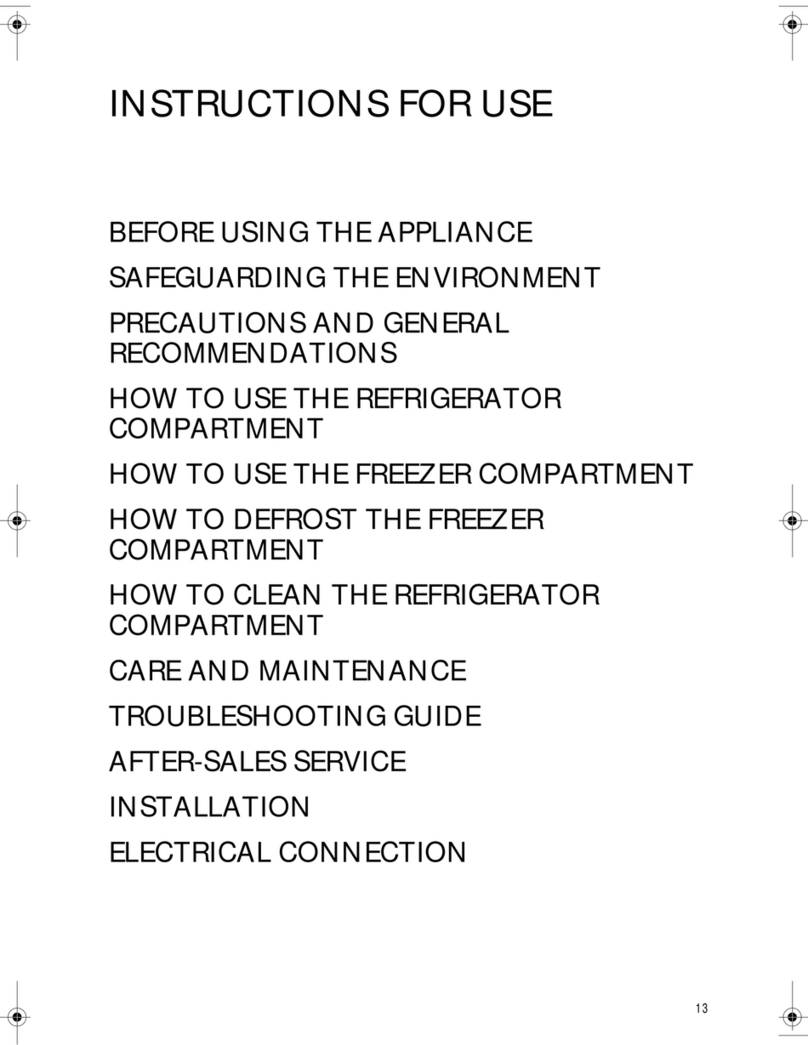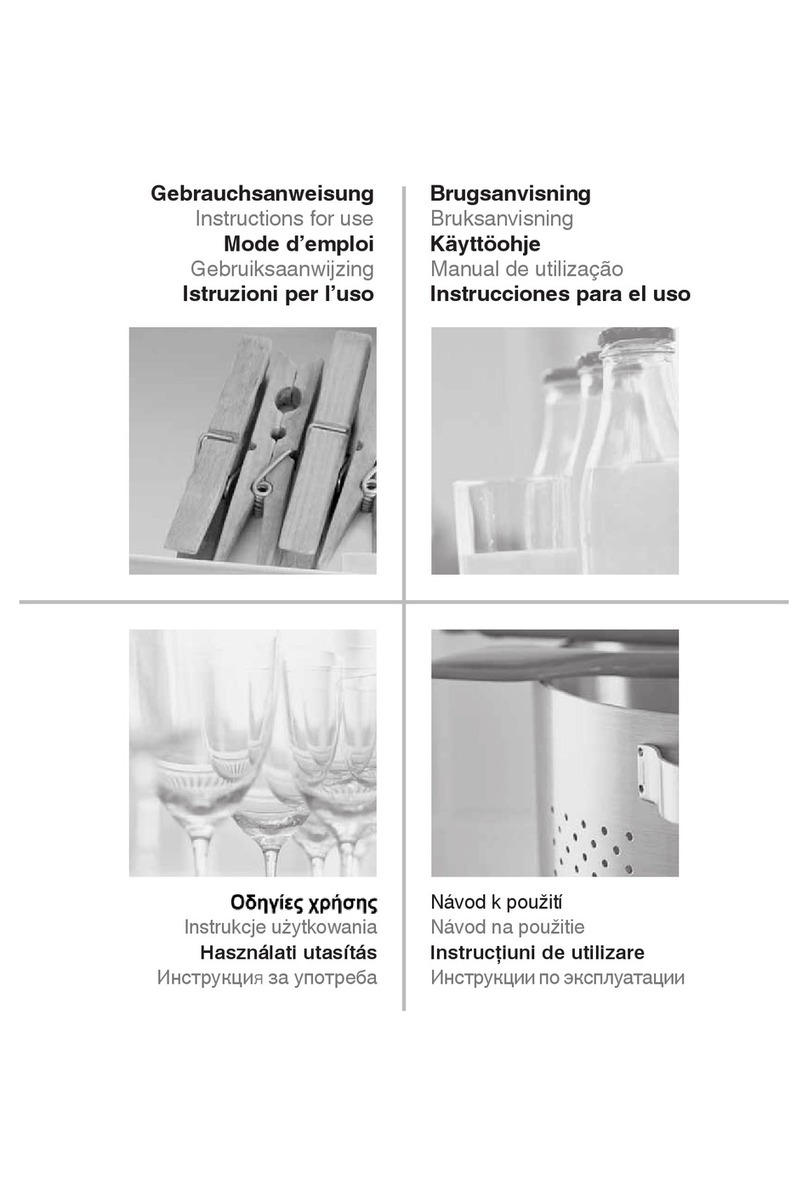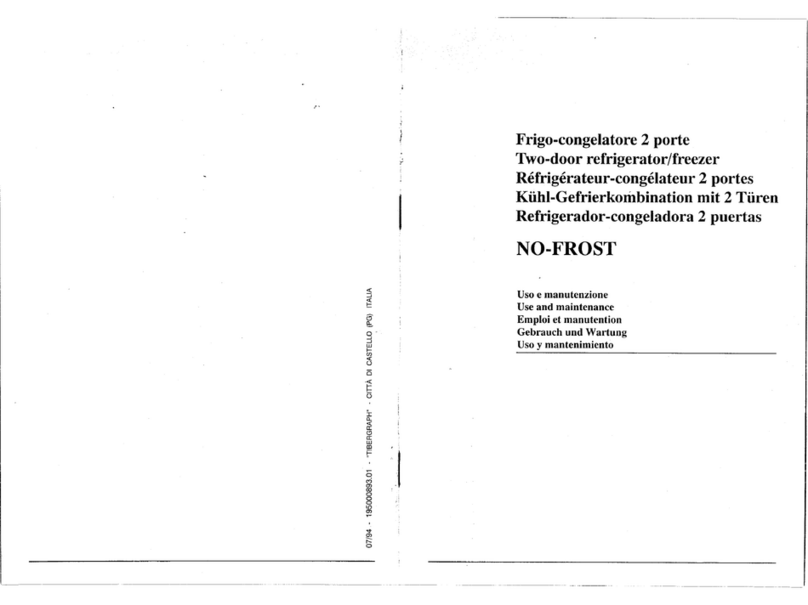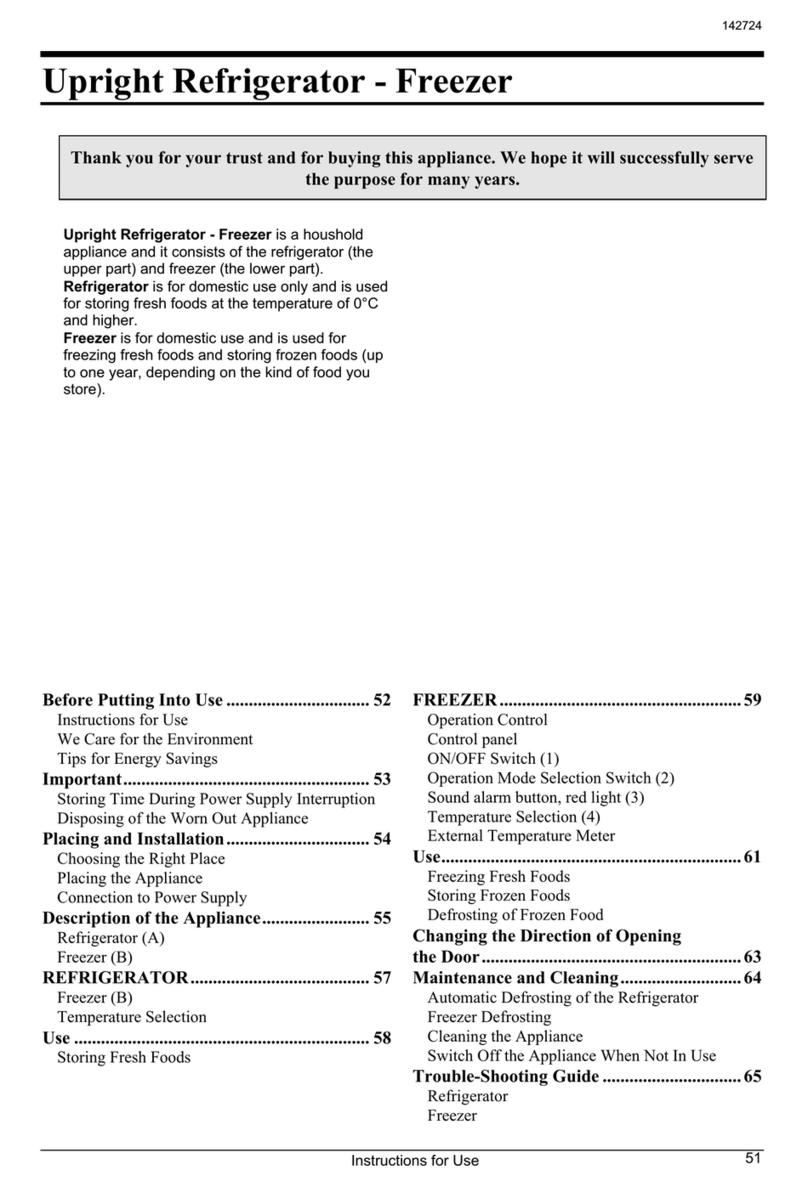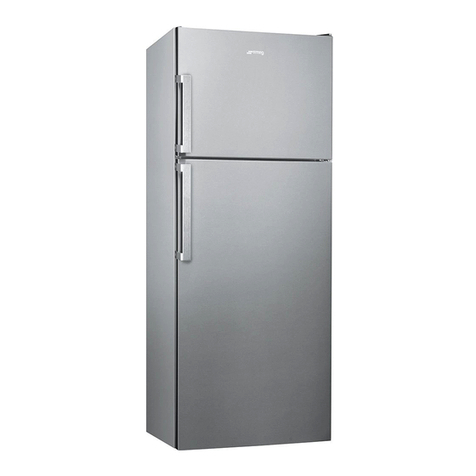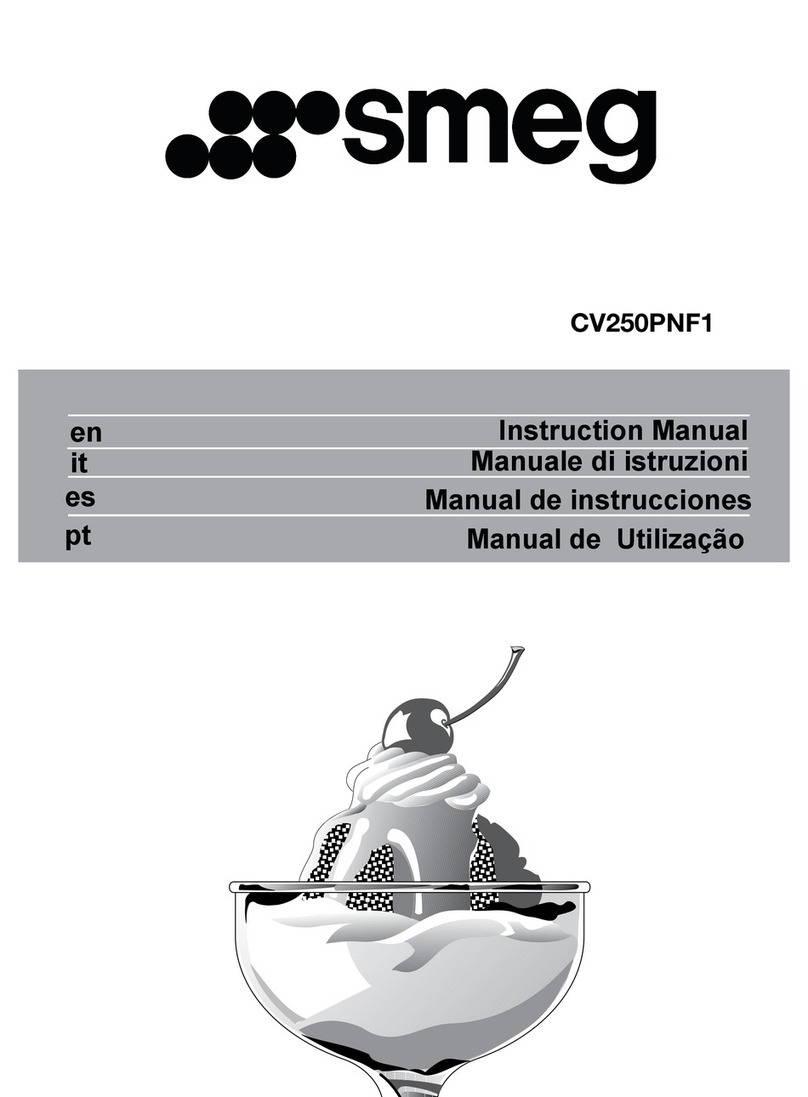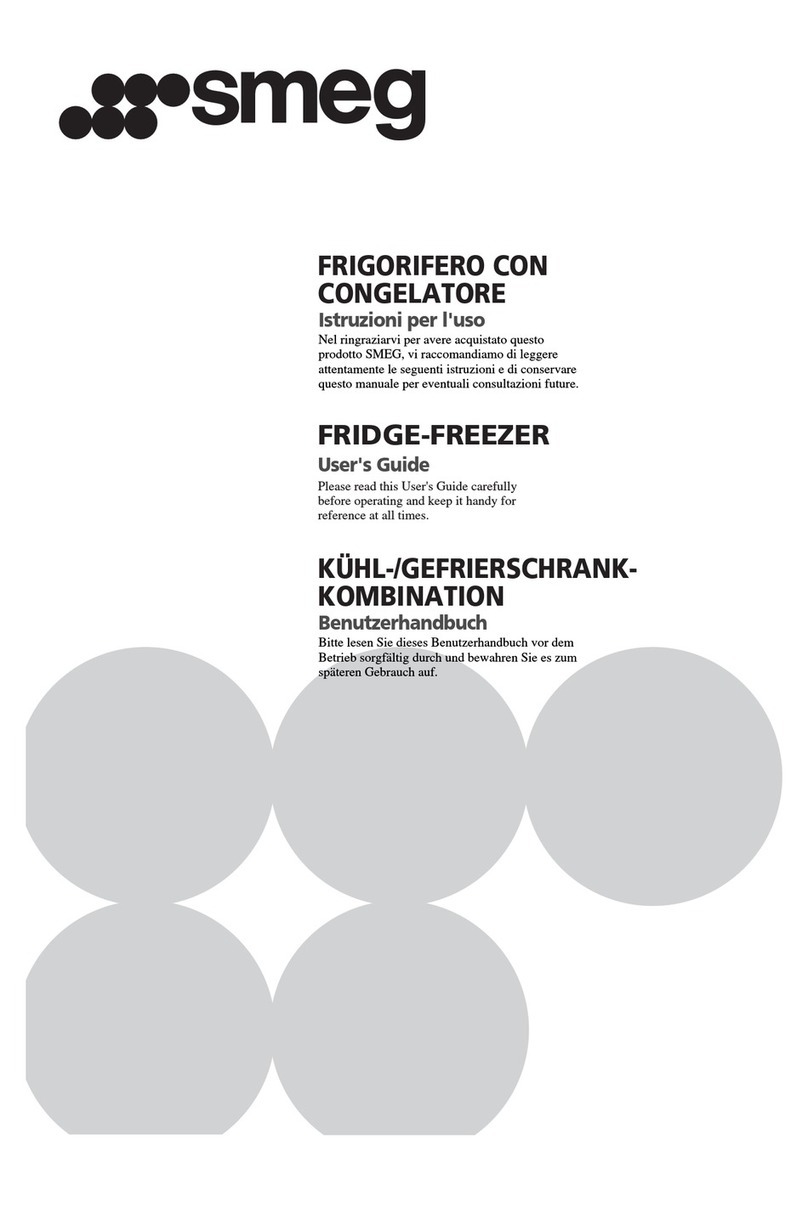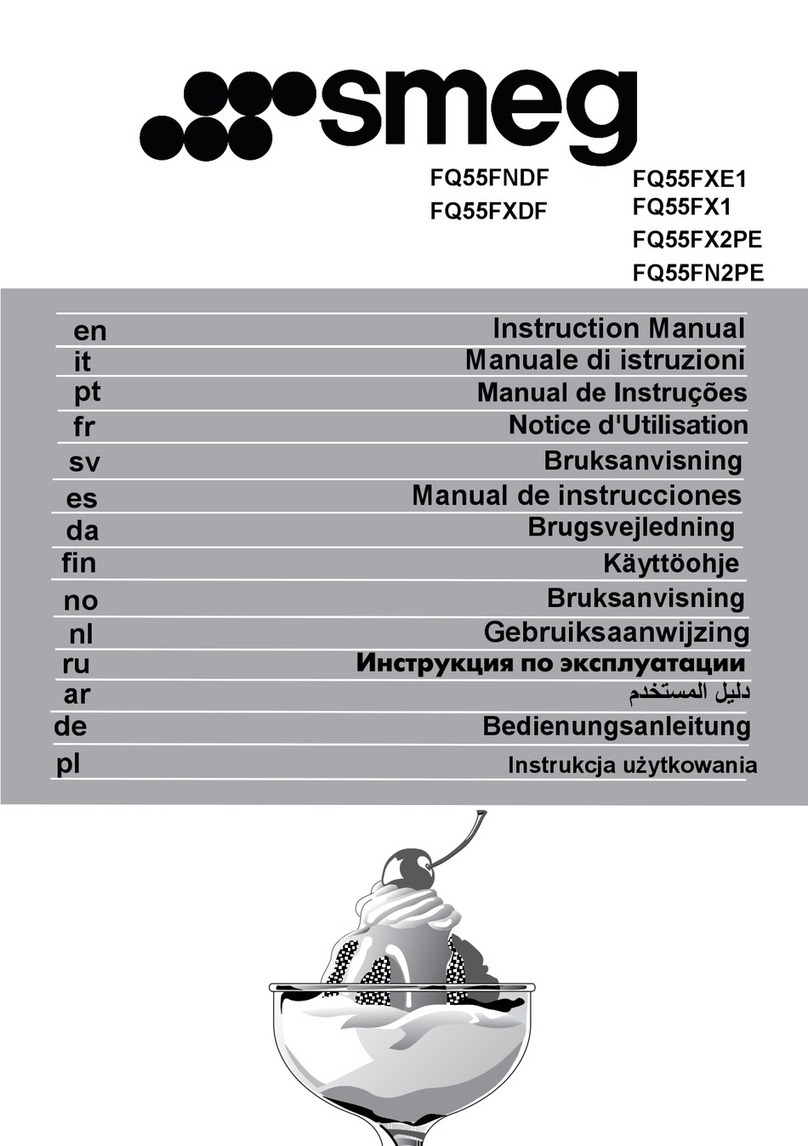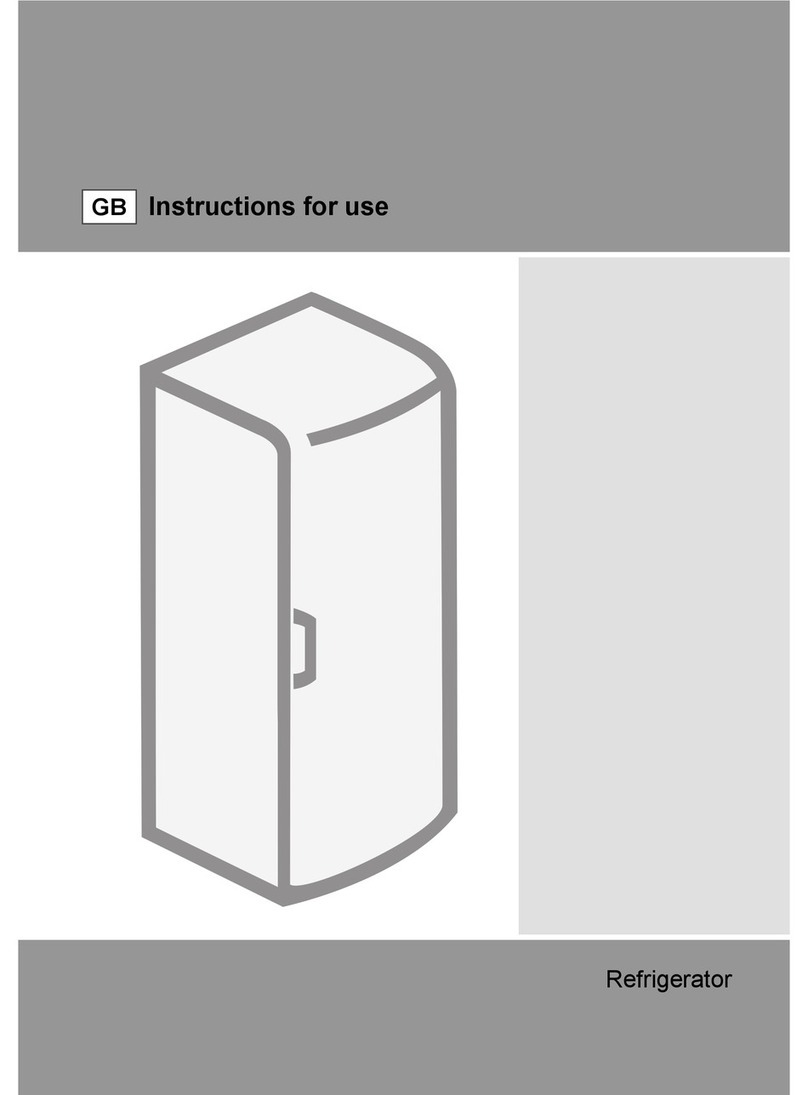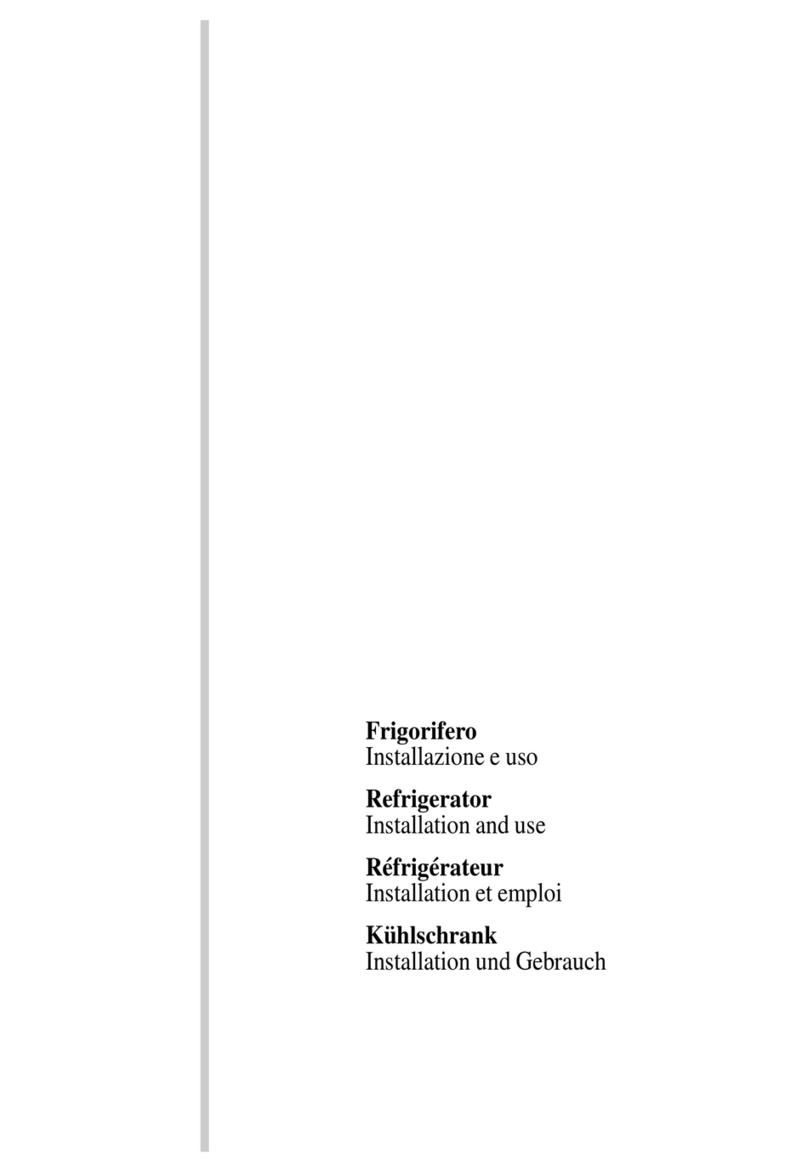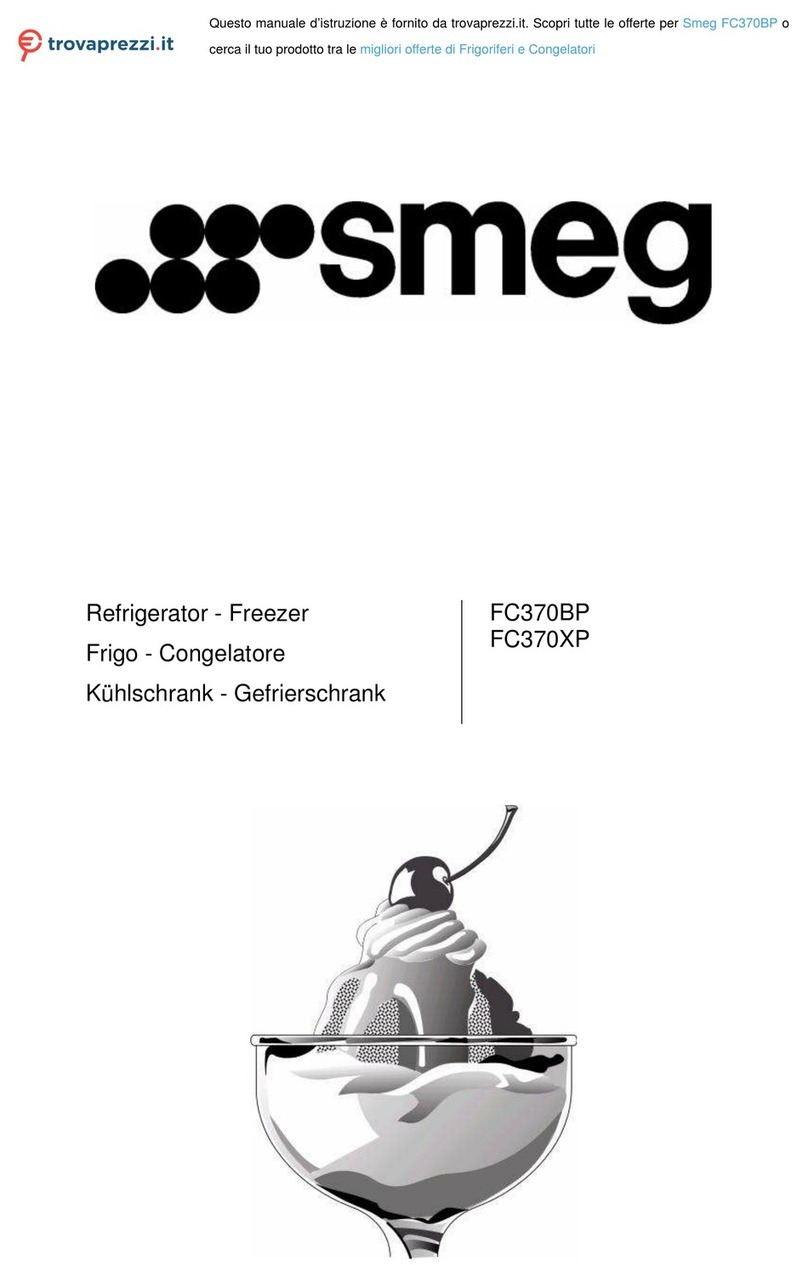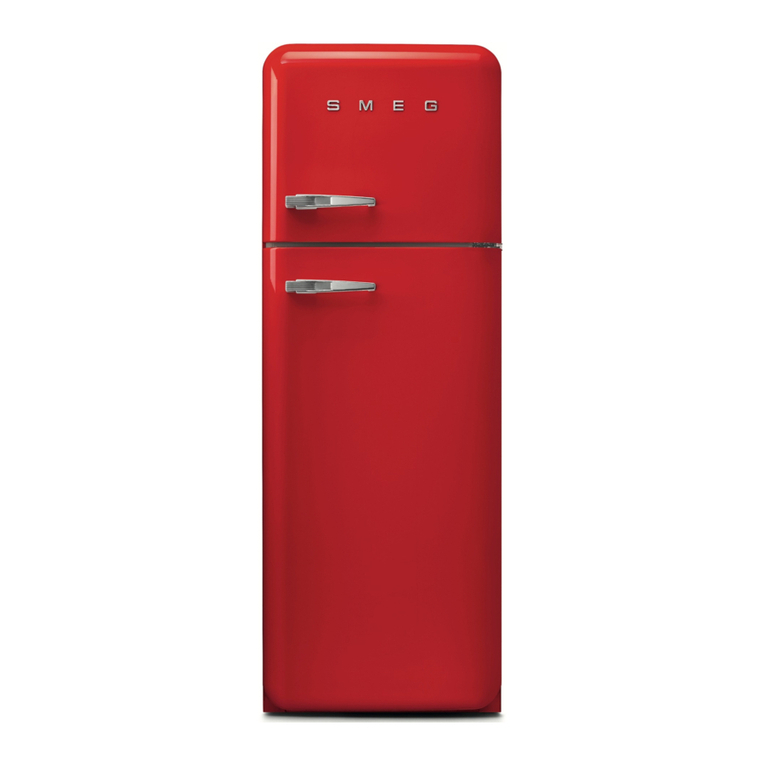
Instructions
6
• CAUTION: Do not store items of interest
to children in cabinets above a range or
on the backguard of a range - children
climbing on the range to reach items
could be seriously injured.
• WEAR PROPER APPAREL: Loose-fitting or
hanging garments should never be worn
while using the appliance.
• For safety reasons and to avoid damage
to your appliance, never sit, stand or
lean on the refrigerator door.
• Never store explosive or flammable
substances, such as gasoline in or in the
vicinity of this refrigerator or use gasoline
or other flammable vapors or liquids in
the vicinity of this or any other appliance.
Read product labels for warnings
regarding flammability and other
hazards. FAILURE TO DO SO CAN
RESULT IN DEATH, EXPLOSION OR
FIRE.
• Use nonflammable cleaner.
• High alcohol drinks must only be stored
sealed and vertical.
• Never touch frozen product straight from
the freezer or put it in your mouth. This
can cause burn injury due to very low
temperatures.
• Unplug your refrigerator before cleaning
and making repairs.
• Disconnect power before installing ice
maker (on ice maker kit ready models
only).
• Do not leave the packing materials
around the home. Sort the various items
of waste and take them to the nearest
specialized waste collection facility.
• ELECTRICAL GROUNDING IS
REQUIRED. It is the customer’s
responsibility:
1. To contact a qualified electrician.
2. To ensure that the electrical system is
adequate and in compliance with the
National Electrical Code ANSI / NFPA
70 Electrical Code – latest edition – or
the CANADIAN ELECTRICAL CODE,
C22.11 – 1982 and C22.2 No.
01982 – or latest edition – and all local
codes and ordinances.
• Do not attempt to repair or replace any
part of this appliance unless specifically
recommended in this manual. All other
servicing should be done by a qualified
technician.
To reduce the risk of fire, electric shock, or
injury to persons when using this
refrigerator, follow basic precautions,
including the following:
• The power cord to this appliance is
equipped with a three-prong grounding
plug for your protection against electrical
shock hazards. It must be plugged
directly into a properly grounded three-
prong receptacle.
• Do not, under any circumstances, cut or
remove the third (ground) prong from the
power cord. For personal safety, this
appliance must be properly grounded.
• Have the wall outlet and circuit checked
by a qualified electrician to make sure
the outlet is properly grounded.
• Do not use an adapter plug.
• Do not use an extension cord.
